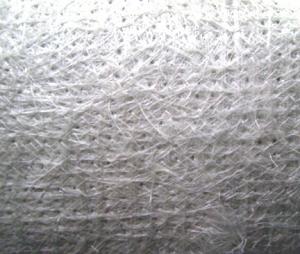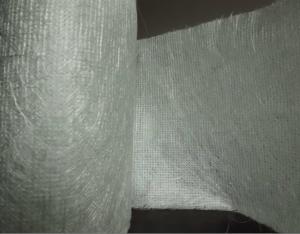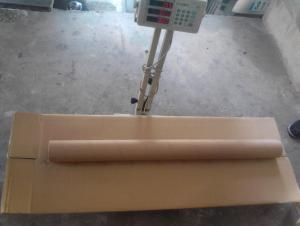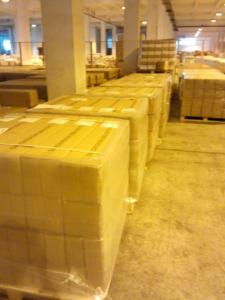E-GLASS Stitch Combo Mat- EMK
- Loading Port:
- China Main Port
- Payment Terms:
- TT or LC
- Min Order Qty:
- 1000 kg
- Supply Capability:
- -
OKorder Service Pledge
OKorder Financial Service
You Might Also Like
DESCRIPTION
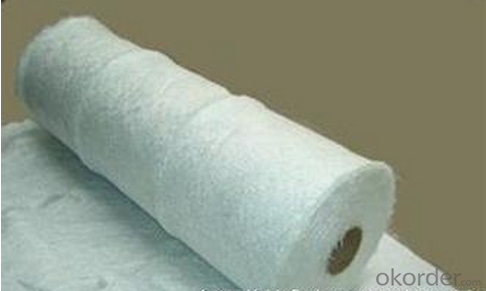
E-glass stitched combo mat consists of two or more layers of fiber glass rovings which arestitch-bonded. one layer of rovings and differene layers of rovings can beoriented differently and have different linear density. the rovingspecification, number of roving layers, mat width and roll diameter can becustomized as per requirement.

SPECIFICATIONS
| Product No | Overall Density | Woven Roving Density | Chop Density | Polyester Yarn Density |
| BH-ESM1808 | 896.14 | 612 | 274.64 | 9.5 |
| BH-ESM1810 | 926.65 | 612 | 305.15 | 9.5 |
| BH-ESM1815 | 1080.44 | 612 | 457.73 | 10.71 |
| BH-ESM2408 | 1132.35 | 847 | 274.64 | 10.71 |
| BH-ESM2410 | 1162.86 | 847 | 305.15 | 10.71 |
| BH-ESM2415 | 1315.44 | 847 | 457.73 | 10.71 |
APPLICATION:
Emulsion Chopped Strand Mat is mainly applied to unsaturated polyester ,viny ester and epoxyresins. The product is most widely used in hand lay-up process and also can be used in filament winding. compression molding and continuous laminating processes. The typical end products including various panels, boats,bath equipment automotive parts and cooling towers
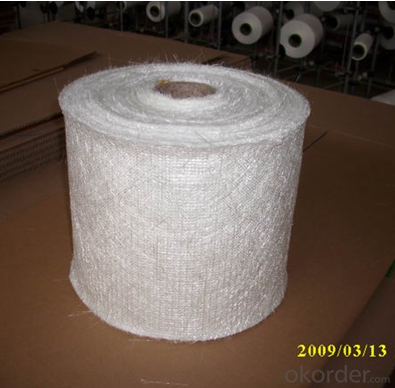
PACKAGE:
fiberglassstitched mat is wound onto paper tube and then wrapped up with plasticfilm, which can be packed in a cardboad box or kraft paper.the rolls are to behorizontallyplaced. rolls can be loaded into container diretly or on pallets.
FAQ:
1.What is the delivery time ?
15days after receiving the deposit
2.Are you a trading company or factory.
We are factory,and we have more than 10 years of experience.
- Q:What are the environmental considerations of using fiberglass fabric?
- There are several environmental considerations associated with using fiberglass fabric. Firstly, the production of fiberglass fabric involves the extraction of raw materials such as silica sand, limestone, and soda ash, which can have negative impacts on ecosystems and contribute to habitat destruction. Additionally, the manufacturing process itself requires a significant amount of energy, which often comes from non-renewable sources and can contribute to greenhouse gas emissions and air pollution. Furthermore, fiberglass fabric is not biodegradable and can persist in the environment for a long time if not properly disposed of. This can lead to accumulation in landfills, increasing waste generation and occupying valuable space. Moreover, the use of fiberglass fabric in certain applications, such as insulation or boat building, may release microscopic glass fibers into the air. Inhalation of these fibers can pose health risks, including respiratory issues and lung damage, for workers involved in the production or installation of fiberglass products. On the positive side, fiberglass fabric is highly durable and long-lasting, which can reduce the need for frequent replacements and minimize waste. It is also resistant to moisture, chemicals, and fire, which can contribute to the safety and longevity of structures or products in which it is used. To mitigate the environmental impacts of using fiberglass fabric, it is essential to consider sustainable alternatives and practices. This could include using recycled fiberglass materials, reducing energy consumption during production, improving waste management and recycling programs, and promoting proper safety measures to protect workers from the potential health hazards associated with fiberglass. Additionally, exploring alternative materials that are more eco-friendly and have a lower environmental footprint could also be considered.
- Q:How does fiberglass fabric perform in dimensional stability?
- Known for its excellent dimensional stability, fiberglass fabric is capable of maintaining its shape and size, even when faced with extreme temperature fluctuations or mechanical stress. This remarkable property grants fiberglass fabric a high resistance to stretching, shrinking, or warping, thereby ensuring the preservation of its original dimensions over time. Moreover, the exceptional dimensional stability of fiberglass fabric makes it a favored choice in industries like aerospace, automotive, and construction, where precise and consistent dimensions are of utmost importance.
- Q:What's the price of fiberglass fabric penetrant?
- The company has strong technical ability, can help customers solve various formulations problems.
- Q:Can fiberglass fabric be used for making insulation tapes?
- Yes, fiberglass fabric can be used for making insulation tapes. Fiberglass fabric is an excellent choice for insulation tapes because it has excellent thermal insulation properties. It is resistant to high temperatures and can withstand extreme heat, making it ideal for applications where insulation is required. Additionally, fiberglass fabric is also resistant to chemicals, moisture, and fire, further enhancing its suitability for insulation tapes. Its strong and durable nature ensures that it can withstand wear and tear, making it a reliable choice for long-lasting insulation tapes. Overall, fiberglass fabric is a great material for making insulation tapes due to its thermal insulation properties, resistance to heat and chemicals, and durability.
- Q:What is the maximum width available for fiberglass fabric rolls?
- The maximum width available for fiberglass fabric rolls can vary depending on the manufacturer and specific product. However, in general, fiberglass fabric rolls typically come in widths ranging from 36 inches to 120 inches. These widths allow for a wide range of applications, from smaller projects to larger industrial applications. It's always best to check with the manufacturer or supplier for the specific maximum width options they have available for their fiberglass fabric rolls.
- Q:What are fiberglass fabrics made of?
- Fiberglass fabrics are made from a material called fiberglass, which is a type of glass that is formed into fibers. These fibers are then spun together to create a fabric. The main component of fiberglass is silica, which is derived from sand. Other materials such as limestone, soda ash, and alumina are also added to the mixture to enhance the properties of the fabric. The combination of these materials undergoes a process called melting and extrusion, where they are heated to high temperatures and then forced through fine holes to create the thin fibers. These fibers are then woven or knitted together to form the final fiberglass fabric, which is known for its strength, durability, and resistance to heat and chemicals.
- Q:What are the different weights available in fiberglass fabric rolls?
- Fiberglass fabric rolls are available in a variety of weights to suit different applications and requirements. The weights of fiberglass fabric rolls typically range from 3 ounces per square yard (oz/yd²) to 50 oz/yd² or even higher. The weight of a fiberglass fabric roll refers to the amount of glass fibers contained in a square yard of the fabric. Generally, the higher the weight, the thicker and stronger the fabric will be. Lightweight fiberglass fabric rolls, such as those weighing 3-8 oz/yd², are often used for applications that require flexibility, such as boat building, surfboard laminations, or repairs on small objects. These lightweight fabrics are easy to handle and conform well to curved surfaces. Medium weight fiberglass fabric rolls, ranging from 10-20 oz/yd², are commonly used for general-purpose applications, such as reinforcing or repairing fiberglass structures, making molds, or creating composite parts. These fabrics provide a good balance between strength and flexibility. Heavyweight fiberglass fabric rolls, with weights ranging from 20-50 oz/yd² or more, offer exceptional strength and are often used for demanding applications that require high structural integrity, such as aerospace, automotive, or marine industries. These fabrics are suitable for building strong, rigid structures or providing reinforcement in high-stress areas. It is important to select the appropriate weight of fiberglass fabric roll based on the specific needs of your project. Factors to consider include the desired strength, flexibility, and durability required, as well as the complexity of the shape or structure being reinforced. Consulting with a fiberglass fabric expert or supplier can help ensure that you choose the right weight for your specific application.
- Q:Can fiberglass fabric be used for making bookbinding material?
- Yes, fiberglass fabric can be used for making bookbinding material. It is a durable and flexible material that can provide strength and protection to book covers, especially for heavy-duty or long-lasting books. Its resistance to tearing and moisture makes it suitable for bookbinding applications.
- Q:Sofa three proofing fabric and 6 anti distinction
- Six cloth is a kind of fireproof, waterproof, moisture-proof, anti-corrosion, insect bites, radiation proof multifunctional cloth. Six cloth and its products is a kind of high technology, the reflectivity of infrared ray radiation wave was above 90%. The color pattern can be made into a variety of patterns, and has the special properties of flame in combustion next, also has good heat preservation and heat insulation.
- Q:Can fiberglass fabric be used for insulation in silos?
- Yes, fiberglass fabric can be used for insulation in silos. Fiberglass fabric is known for its excellent thermal insulation properties, making it a suitable choice for insulating silos. It can effectively prevent heat transfer, keeping the temperature inside the silo stable and protecting the stored materials from extreme temperature fluctuations. Additionally, fiberglass fabric is resistant to moisture and chemicals, making it a durable and long-lasting insulation material for silos.
1. Manufacturer Overview |
|
|---|---|
| Location | |
| Year Established | |
| Annual Output Value | |
| Main Markets | |
| Company Certifications | |
2. Manufacturer Certificates |
|
|---|---|
| a) Certification Name | |
| Range | |
| Reference | |
| Validity Period | |
3. Manufacturer Capability |
|
|---|---|
| a)Trade Capacity | |
| Nearest Port | |
| Export Percentage | |
| No.of Employees in Trade Department | |
| Language Spoken: | |
| b)Factory Information | |
| Factory Size: | |
| No. of Production Lines | |
| Contract Manufacturing | |
| Product Price Range | |
Send your message to us
E-GLASS Stitch Combo Mat- EMK
- Loading Port:
- China Main Port
- Payment Terms:
- TT or LC
- Min Order Qty:
- 1000 kg
- Supply Capability:
- -
OKorder Service Pledge
OKorder Financial Service
Similar products
New products
Hot products
Related keywords
